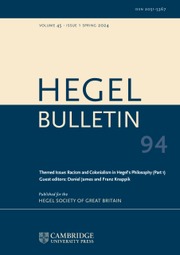Article contents
Kierkegaard and the Limits of Thought
Published online by Cambridge University Press: 09 September 2016
Abstract
This essay offers an account of Kierkegaard’s view of the limits of thought and of what makes this view distinctive. With primary reference to Philosophical Fragments, and its putative representation of Christianity as unthinkable, I situate Kierkegaard’s engagement with the problem of the limits of thought, especially with respect to the views of Kant and Hegel. I argue that Kierkegaard builds in this regard on Hegel’s critique of Kant but that, against Hegel, he develops a radical distinction between two types of thinking and inquiry: the ‘aesthetic-intellectual’ and the ‘ethico-religious’. I clarify this distinction and show how it guides Kierkegaard’s conception of a form of philosophical practice that involves drawing limits to the proper sphere of disinterested contemplation. With reference to two rival interpretations of Kierkegaard’s approach to the limits of thought—which I call ‘bullet-biting’ and ‘relativizing’—I further show how my ‘disambiguating’ account can better explain how, and why, his work courts a form of self-referential incoherence, in which it appears that certain limits of thought are at once affirmed and violated.
- Type
- Articles
- Information
- Copyright
- © The Hegel Society of Great Britain 2016
References
- 4
- Cited by





